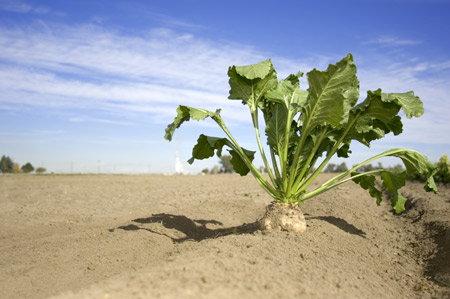Brazil’s Sugar Sector Goes on a Diet
Category: Sugar
 (Wall Street Journal) – Brazil’s sugar industry is slimming down, a shift that producers hope will deliver them from a years long glut that has depressed prices.
(Wall Street Journal) – Brazil’s sugar industry is slimming down, a shift that producers hope will deliver them from a years long glut that has depressed prices.
The sugar surplus has led processors to shut dozens of mills and some growers to invest less in their fields. The moves highlight the desperate economics of the domestic sugar industry following an ill-fated expansion.
The effect of the cutbacks in Brazil, which is the world’s biggest producer of the sweetener and accounts for more than 40% of exports, hasn’t yet hit the world marketplace, where prices are near their lowest in more than six months. But many analysts expect the impact to be felt as soon as next year.
Some forecasters anticipate global production to fall short of demand in the 2015 crop year, ending four years of oversupply. Rabobank predicts the world’s sugar supply will trail demand by 2.5 million metric tons when the next season ends in September 2015. That would be the first deficit since 2010. The International Sugar Organization is predicting the smallest surplus since that year for the coming season.
But the picture isn’t likely to improve in the near term. Globally, sugar demand is forecast to expand 1.7% this year, according to the ISO. It predicts global production will outpace demand for a fourth consecutive year when the season ends on Sept. 30. Meanwhile, futures have fallen 4.8% this year.
“You’re looking at a reduced crop at reduced prices,” said Michael McDougall, a senior director and head of the Brazil desk at New York brokerage Newedge. “That equals disaster.”
Sugar prices’ slide is painful for Brazil’s troubled economy, which fell into recession in the past quarter. Finance Minister Guido Mantega on Friday said sliding commodity prices were weighing on economies across Latin America.
Another factor limiting sugar production: Cane yields have fallen as crops were hit with the worst drought in decades early this year during a key growing period.
The country’s main center-south growing region will likely reap a crop of 545.9 million metric tons this year, down from 597.1 million tons last year, Unica, Brazil’s sugar-cane-industry association. The estimate is 9% lower than the government forecast for this season.
In response to the drop in prices, fewer mills have been processing cane into sugar and ethanol this season than at any time in the past six years, said Plinio Nastari, president of São Paulo-based consulting firm Datagro.
Since 2009, 44 sugar mills have closed, according to Unica. Mr. Nastari estimated that 377 would operate this year. Unica says about 400 operated last year.
Meanwhile, cane suppliers “are taking less care of their sugar-cane fields,” said Luiz Gustavo Figueiredo, commercial director at Alta MogianaSA, a sugar-cane processor based in northeast São Paulo state that relies on third-party cane growers for about one-quarter of the cane it processes into sugar and ethanol.
Current sugar prices are below the cost of production, which Mr. Figueiredo estimates at 1,000 reais a ton, or about 21 cents a pound, including transportation to Brazil’s ports. The raw-sugar contract for October ended Wednesday at 15.62 cents a pound on ICE Futures U.S.
The futures market is signaling that prices may soon rise. The March 2015 contract for raw sugar is nearly 2 cents per pound higher than the October 2014 futures, a record gap for those two contracts, indicating investors expect higher prices in the next crop season. The difference adds up to $2,240 per 112,000-pound contract.
Sugar producers and food companies use such futures to lock in prices in advance and protect against volatility in the market.
“There will be less sugar available for the international market,” said Arnaldo Luiz Corrêa, a director at Archer Consulting in Santos, Brazil. “That should affect prices upward.”
Brazil’s efforts to support sugar prices could be undone by other suppliers, however. Thailand, the world’s second-largest sugar exporter, could ramp up its shipments amid fading threats such as the El Niño weather pattern, which forecasters have said could be weaker and later than expected, and tepid economic growth.
“People will rush to sell whatever they can to bring hard currency,” said Archer Consulting’s Mr. Corrêa.
The number of bets by investors on falling raw-sugar prices is near a seven-month high. Such bets largely focus on the near term. Still, some investors are starting to turn their attention to on next year’s supply-and-demand balance.
Kevin Kerr, president of Kerr Commodity Watch, an independent trader, said he bought bullish options for the March raw-sugar contract in mid-August. The options allow Mr. Kerr to buy futures at a favorable price should their value continue to rise.
“We’re not interested in trading the short term. We clearly have a lot of sugar on hand at the moment,” he said. “By the middle of next year, we could be in a real deficit.”
Some processors such as Alta Mogiana are supplementing their income with other products, such as electricity generated from burning spent cane stalk. Demand for that is strong as hydropower-reliant Brazil struggles with a drought.
Brazil’s cane processors often grow some of their own cane and buy the rest from independent producers. To save money, some growers are forgoing planting new cane. Farmers also are using less fertilizer as sugar prices squeeze their profits.
Brazil’s energy policy is another deterrent for processors to increase production, which use around half of their cane to make ethanol. Brazil’s state-controlled oil company subsidizes gasoline, forcing ethanol producers to set prices lower to remain competitive




